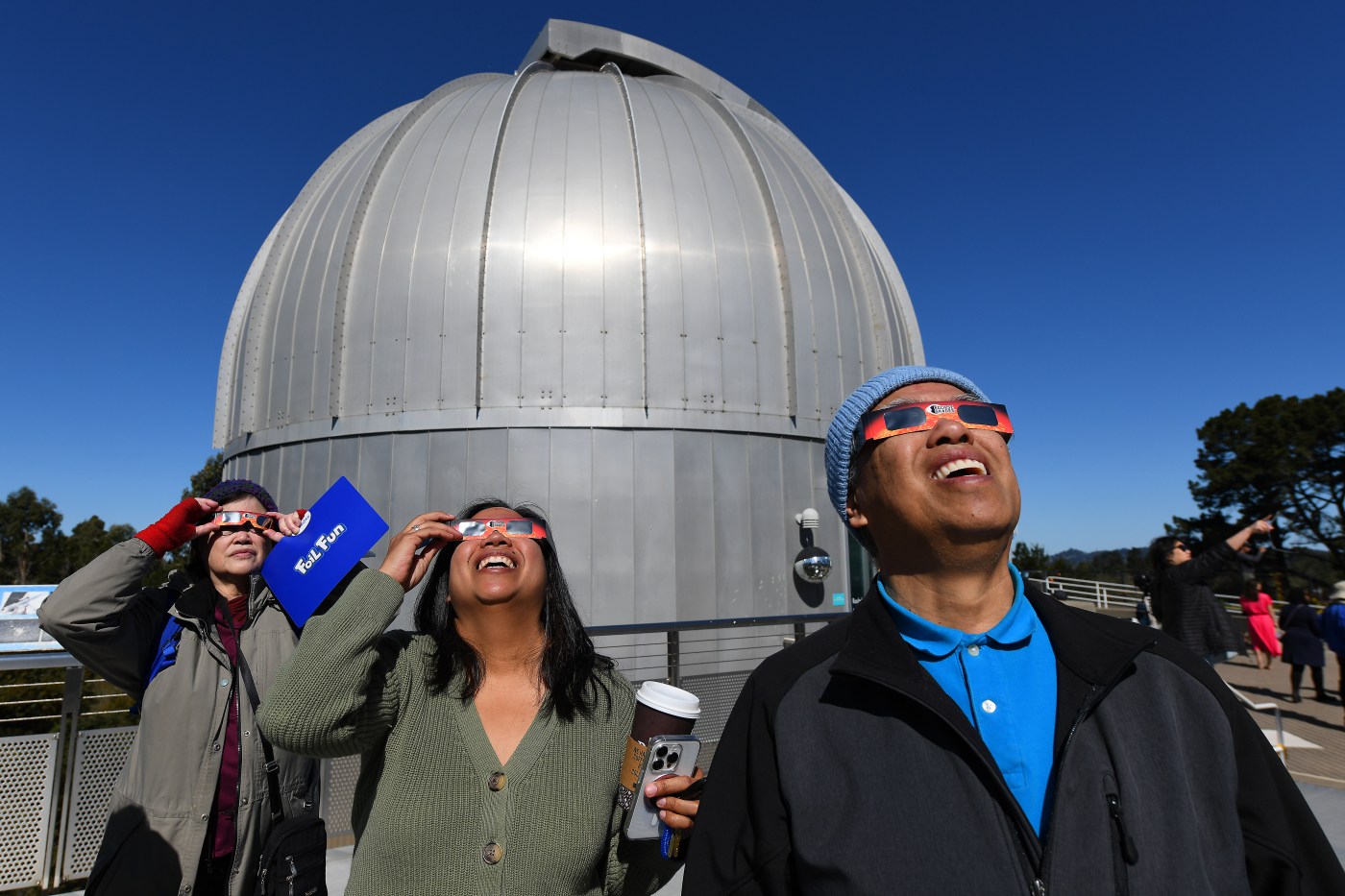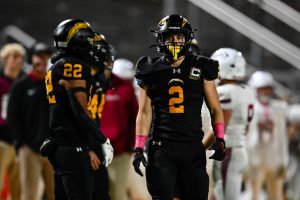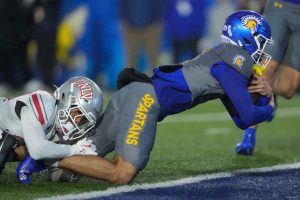It wasn’t the full-blown extravaganza that some parts of the United States saw. But it was still pretty cool.
All across the Bay Area Monday morning in back yards, office buildings and observatories people paused to watch a rare astronomical spectacle: a partial solar eclipse.
In some parts of the United States where a total eclipse unfolded, including Texas and Oklahoma, cloudy skies and rain affected the show, disappointing people who had traveled long distances for the once-in-a-lifetime event.
But the Bay Area was largely cloud-free all morning.
Clear skies across Northern California allowed people a perfect view as the moon obscured 34% of the sun in San Francisco and Oakland, and 36% in San Jose. The event began at 10:14 a.m., peaked at 11:13 a.m. and was scheduled to end at 12:16 p.m.
Despite the panoramic view from the deck at the Chabot Space & Science Center in the Oakland Hills, most of the 400 visitors who turned up for a sold-out eclipse-viewing party spent the morning facing southeast, with their chins tilted 45° looking up at the unfolding display.
Onlookers peered through pairs of flimsy eclipse glasses, personal cameras or the variety of telescopes — big and small — available on Chabot’s viewing deck.
Some residents lined up two hours early for a prime spot to see the slow-moving, interstellar action.
Tracey Silva of Oakley was there to celebrate her 58th birthday with her daughter, Indigo Silva, 30, of Brentwood, and her mother, Linda Adams, 76, of Brentwood.
“These are the moments that, when you’re making memories, can top any gift of monetary value,” she said.
#Eclipse viewing with the Astronomy 101 class at @SJSU. pic.twitter.com/4eqKYx7E5b
— Ian Cull (@NBCian) April 8, 2024
Dozens of people also visited the Foothill College Observatory in Los Altos Hills to see the show.
Saranya Seela, an 8-year-old girl from West San Jose, came with her mom.
“I was really curious how it would look,” she said. “I was thinking how the path of totality would look too. It was kind of cool. I still didn’t understand how it was only a little away from being complete. It looked kind of red and kind of furry, and I liked that.”
Seela she wants to be an astronomer or astrophysicist one day. Her favorite part of viewing the eclipse, she said, was that seeing the sun while wearing solar eclipse glasses. She said her favorite telescope to view it was the one with the hydrogen alpha filter.
The Meta family from Mountain View also stopped by.
Related Articles
Total solar eclipse inspires a special doughnut from Krispy Kreme
Watch Live: 2024 total solar eclipse
Solar eclipse: When it begins, and 4 other things to know
Solar eclipse: Will my cell phone service be disrupted?
Where to get free eclipse glasses in the Bay Area before April 8
Unable to find eclipse glasses to buy because of the sudden demand, they looked online and learned how to make a viewer from a cereal box. Staring directly into the sun during an eclipse can cause eye damage, and with the excitement over the event nationally, eclipse glasses have been in short supply.
“It was cool to see the sun not in a circle but in a different shape,” said Mayra Mehta, 10. “We didn’t have any special glasses, so we still wanted to see the solar eclipse but we wanted to make a fast and convenient version.”
In the Bay Area, total solar eclipses — where day turns to night, stars come out, temperatures drop and birds stop singing — are extremely rare. The last one visible over San Francisco occurred 600 years ago, on June 26, 1424, according to NASA.
And the next one won’t happen until 228 years from now, on Dec. 31, 2252.
The @SCCgov Sheriff’s Office Command Staff ventured to the roof to catch the partial #solareclipse in #SanJose! #Eclipse2024 pic.twitter.com/FxqcLdWnhD
— SantaClaraCoSheriff (@SCCoSheriff) April 8, 2024
Partial solar eclipses are more common. In recent years, several other partial eclipses have captured the Bay Area’s imagination. One occurred in 2012 when the moon obscured 84% of the sun. Another unfolded in 2017, when 76% of the sun was covered.
Last October, a different type of solar eclipse, called a “ring of fire” or annular eclipse, where the moon obscures part of the sun but leaves a ring around it, was visible in the Bay Area. But only just briefly, as fog and clouds disappointed millions of people who looked up.
(This story will be updated)
Max partial eclipse of 34% over Half Moon Bay, with several bonus sunspots. pic.twitter.com/ESY1MhRvdT
— Jan Null (@ggweather) April 8, 2024












